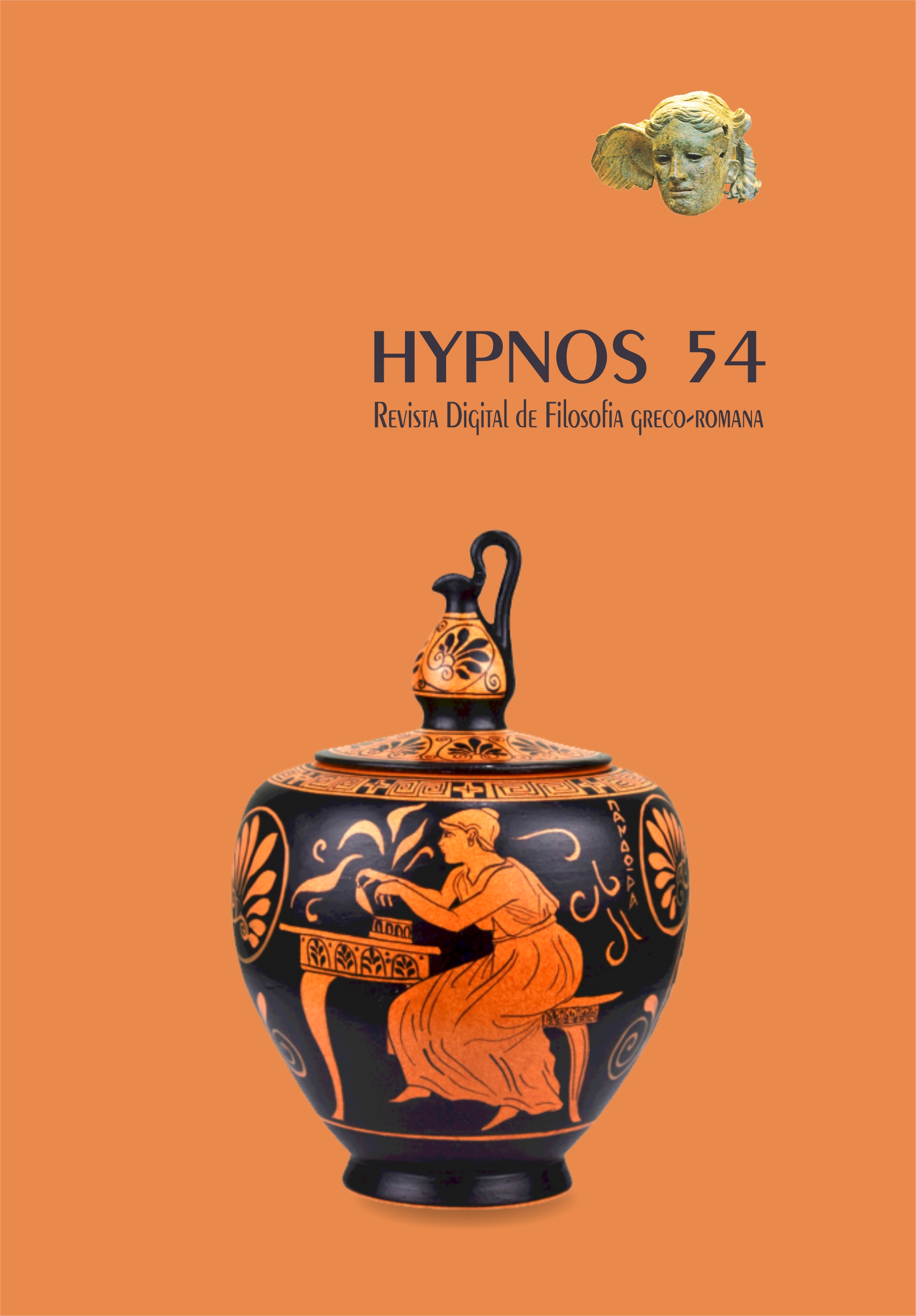Analisi di due vie di fuga dalla critica aristotelica delle Forme platoniche
Parole chiave:
Separazione, Forme, Metafisica, RealismoAbstract
Questo lavoro esplora due vie di fuga dalla critica che Aristotele fa alle Forme platoniche, nello specifico alla separazione. La separazione delle Forme o Idee è una delle caratteristiche più problematiche, se non la più problematica, per accettare la fattibilità della Teoria delle Forme. Le due possibili risposte, basate sulle recenti interpretazioni di questa critica, sembrano promettenti, tuttavia ci sono forti obiezioni che rendono difficile credere che siano decisive.
Riferimenti bibliografici
Annas, Julia (1982). Aristotle on inefficient causes. Philosophical Quarterly 32 (129):311-326
Aristóteles, Física, Gredos, Madrid (1995).
________, Metafísica, Gredos, Madrid (1998).
________, Acerca de la Generación y la Corrupción. Tratados Breves de Historia Natural. Traducción de Ernesto La Croce, Gredos, Madrid (1987.)
________, Ética Nicomáquea, Gredos, Madrid (1993).
________, Ética Eudemia, Gredos, Madrid (1993).
________, Magna Moralia, (Trad. Jesús Manuel Araiza, en proceso de dictamen para publicación en edición bilingüe en la Bibliotheca Scriptorum Graecorum et Romanorum Mexicana, UNAM).
Armstrong, D.M. (1988), Los Universales y el Realismo Científico, Universidad Nacional Autónoma de México, p. 39.
De Haas, F. A. J., (2009), ‘Aporiai 3-4’, en Aristotle: Metaphysics Beta Symposium Aristotelicum, Michel Crubellier and Andre´ Laks (eds.), Oxford, pp. 73-104.
Devereux, Daniel T. (1999), “Separation and Inmanence in Plato´s Theory of Forms”, Plato 1 Metaphysics and Epistemology, Oxford University Press, New York (1999).
Di Camillo, S. G. (2012). Aristóteles historiador. El examen crítico de la teoría platónica de las Ideas. Facultad de Filosofía y Letras-Universidad de Buenos Aires
Düring, Ingemar, Aristóteles, UNAM, México, 1987.
Fine, Gail (1993) On Ideas: Aristotle’s Criticism of Plato’s Theory of Forms, Clarendon Press, Oxford.
_______, (1986), Inmanence en Plato on Knowledge and Forms, Oxford University Press, New York (2003).
_______, (1986b), Forms as Causes: Plato and Aristotle, Oxford University Press, New York (2003).
Frank, D. H., (1984) The Arguments ‘From the Sciences’ in Aristotle’s Peri Ideon, Nueva York, Peter Lang.
González Varela, J. E. (2010). “El argumento de lo uno sobre muchos del Peri ideōn”, Revista Latinoamericana de Filosofía, 36, 209-37.
_______, (2013). “El argumento platónico a partir de los relativos del Peri ideōn”, en Tras las huellas de Platón y el platonismo en la filosofía moderna. De su simiente griega a la Ilustración, México, Universidad Nacional Autónoma de México, pp. 111-141.
_______, (2018) “The Razor Argument of Metaphysics A.9”, Phronesis, 63, pp. 408-448.
__________, (2020) “La objeción de Aristóteles en contra de las Formas en Metafísica M.9”, Revista Archai, 30, pp. 1-25.
__________, (2020 b) “The One over Many Principle of Republic 596a”. Apeiron, 53(4), 339-361. https://doi.org/10.1515/apeiron-2018-0086
Irwin, T.H., (1988), Aristotle’s First Principles, Oxford.
Katz, E. (2017). Ontological Separation in Aristotle’s Metaphysics. Phronesis, 62(1), 26-68
Morrison, D., (1985) “Separation in Aristotle’s Metaphysics’" Oxford Studies in Ancient Philosophy, 3, pp. 125-157.
Owen, G. E. L., (1957) “A Proof in the Peri Ideôn”, en Owen, Logic Science and Dialectic, Nueva York, Cornell University Press (1986: pp. 165-179). De: Journal of Hellenic Studies, 77, pp. 103-111.
Platón, Fedón, Gredos, Madrid (2008).
Sedley, D. (2013), “Plato and the One-over-Many Principle”, en Chiaradonna & Galluzzo (eds.) Universals in Ancient Philosophy. Pisa: Edizione Della Normale 2013, 113-37.
Santa Cruz, M. I., M. I. Crespo y S. Di Camillo, (2000) Las críticas de Aristóteles a Platón en el tratado Sobre las Ideas, Eudeba, Buenos Aires.
Smith, J. A. (1917), “General Relative Clauses in Greek”, Classical Review 31: 69-71.
Taylor, C. C. W., “Forms as Causes in the Phaedo”, Mind, 78 (1969), 45-59.
Van Inwagen, Peter. “A theory of Properties” en Oxford Studies on Metaphysics, 2004, p. 107.
Downloads
Pubblicato
Fascicolo
Sezione
Licenza
Copyright (c) 2025 Revista Hypnos

Questo lavoro è fornito con la licenza Creative Commons Attribuzione - Non commerciale - Condividi allo stesso modo 4.0 Internazionale.
O conteúdo dos manuscritos enviados é de responsabilidade exclusiva dos autores. Os textos devem ser originais. Caso tenham sido publicados em alguma revista não brasileira, o autor deve claramente indicar o nome, número e data da publicação e país. A editoria decidirá sobre o interesse em publicar na Hypnos.
O conteúdo dos manuscritos foi tácita ou explicitamente aprovada pela autoridades responsáveis onde se realizou a pesquisa.
Se aceito o manuscrito, o autor concorda em permitir sua publicação pela revista Hypnos, declinando de ganhos pecuniários decorrentes de direitos autorais. Caso o manuscrito venha a ser posteriormente publicado em outros meios, o autor concorda em fazer constar os créditos da primeira publicação na subsequente.
Caso o documento submetido inclua figuras, tabelas ou seções extensas de texto previamente publicados, o autor se declara responsável por ter obtido permissão dos detentores originais dos direitos autorais desses itens, tanto para a publicação em linha quanto impressa desta revista. Todo material com direitos autorais deve ter créditos adequadamente atribuídos no manuscrito.


 A revista
A revista 